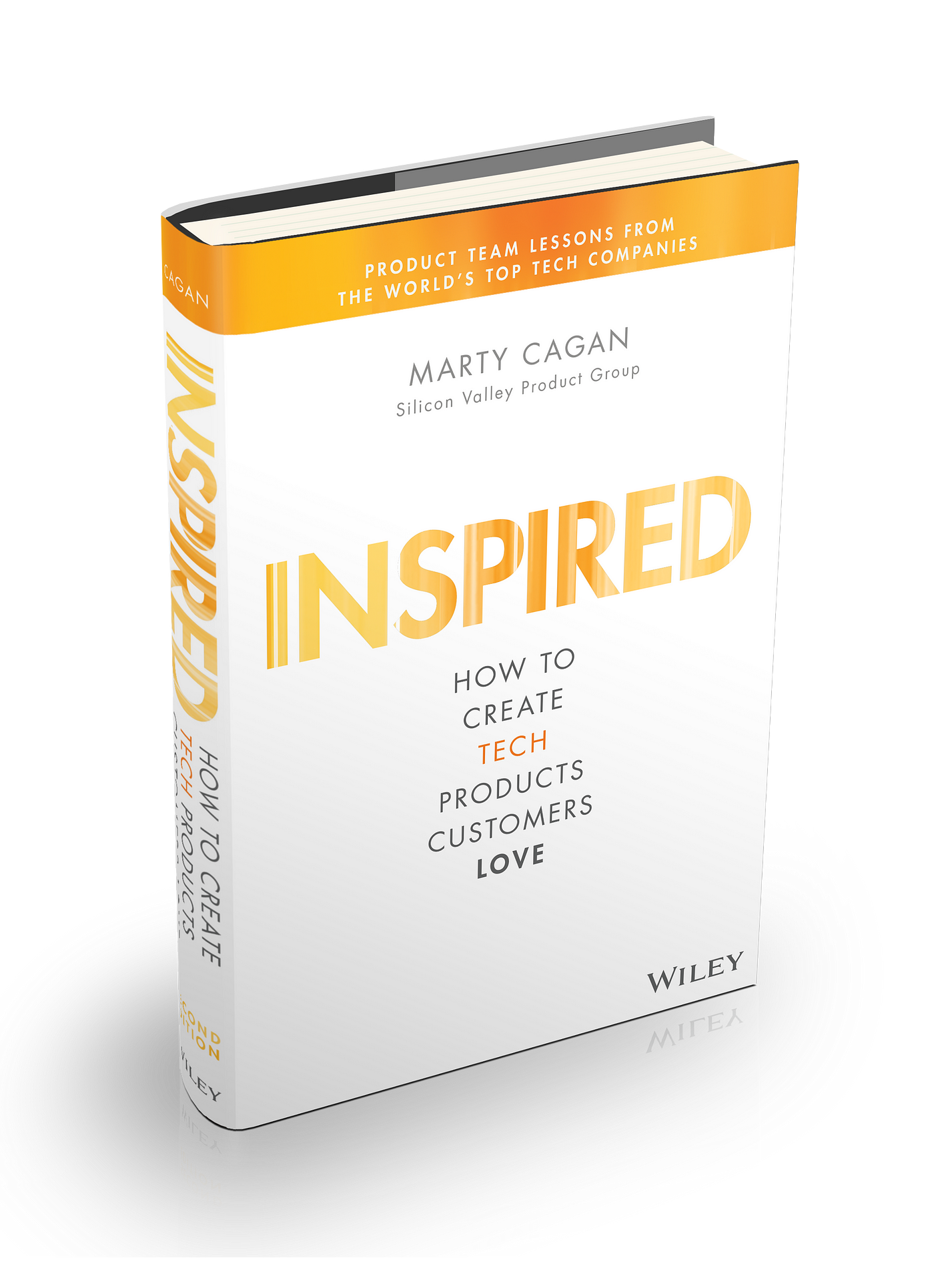Blog Product ManagementThe Best Product Management Books for Startups in 2024
The Best Product Management Books for Startups in 2024
Looking for the Best Product Management Books? In this post, we've listed 5 of our favorite books that have helped us as founders build a successful product and a startup. Let's get into it!

Not sure which product management books are worth your time?
Don’t worry - we've put together a list of the best books that impacted us as we grew as startup founders & product managers ourselves.
Product management is an incredibly complicated process, and that's why we’re big fans of product management books. Let's get started!
A quick overview:
- The Lean Product Playbook by Dan Olsen
- How to Create Tech Products Customers Love by Marty Cagan
- Shape Up by Clickup
- The Hard Thing About Hard Things by Ben Horowitz
- Product Management in Practice by Matt LeMay
What counts as a product management book?
Before we get to the details of each book, we should probably explain what a product management book is.
You won’t find a “product management” category on Amazon or in a bookstore. That’s because product management encompasses a wide range of skills and responsibilities. As a result, product management books are spread across all kinds of categories.
Here’s a quick overview:
- Leadership
- Business strategy
- UX and design
- Product development and innovation
- Marketing and sales
- Frameworks and methodologies
A leadership book written for CEOs can offer valuable lessons for PMs leading cross-functional teams. A marketing book can provide insights on positioning and promoting a new product—regardless of whether it was written for SaaS PMs.
Does it make sense to look for books written for your specific role? Absolutely.
But don’t limit yourself to just those categories. Expand your horizons and explore books from different areas.
5 Best Product Management Books
1. The Lean Product Playbook

The Lean Product Playbook by Dan Olsen has made a lot of waves.
Founders and CEOs from companies like KISSmetrics, Crazy Egg, and Box have given it glowing reviews. Plus, it's one of the most popular product management books in general.
But that’s not why we love this book.
We love it because it’s a practical guide for product managers trying to create innovative products that customers will love. Olsen's approach is based on the minimum viable product (MVP) concept—something you’re probably familiar with (but might be using the wrong way).
The book gives you a simple, step-by-step process for building and launching successful products. The advice is good, and we feel it’s applicable to pretty much any type of product or company.
Key lessons
- Identify and prioritize underserved needs. Understanding your target market and finding their unmet needs is crucial.
- Define your value proposition. After pinpointing underserved needs, the next step is ensuring your product outperforms competitors. This means crafting a compelling value proposition that connects with your target market.
- Minimum Viable Product (MVP). MVPs are vital in the Lean Product Playbook. Test your product with minimal features before investing in a full-scale one. Validate assumptions and adjust based on user feedback.
- User experience (UX). The Lean Product Playbook highlights user experience in product development. Test your MVP with customers to validate and enhance the user experience based on their feedback.
Who is it best for?
The Lean Product Playbook is great for product managers, entrepreneurs, and anyone working on improving products. It's useful for new companies and ones that have been around for a while and want to improve their product-making.
Where to buy?
You can buy the book on Amazon as a Kindle e-book, paperback, or audiobook.
2. Inspired

Inspired: How to Create Tech Products Customers Love by Marty Cagan provides valuable insights into building successful tech products.
It draws from Cagan's experience in product management and offers a new kind of framework for success.
Cagan outlines the roles of the product manager, designer, engineers, and the head of product or CPO. He illustrates how each role's focus on customer needs, market knowledge, and continuous improvement contributes to success.
He also explains how to generate inspiration, insight, and motivation from customers and team members.
Key lessons
- Tap your engineers for their ideas. Your engineers are often your best source for innovative, inspired ideas because they’re in the mud, making the product work.
- Inspired products take great technology, design, and persistence. A successful product requires a strong foundation of technology, design, and determination to keep trying to get users to see the value.
- Risks aren't (always) risky: Not taking risks is often more risky than taking risks you recognize and plan for. This includes recognizing and addressing potential risks early on in the planning process.
- Customer discovery and continuous testing. To truly understand your customers' needs, you need an open line of communication. That’s why product management software like Featurebase are so useful - they offer companies a suite of tools for gathering, organizing, and prioritizing feedback at scale.
Who is it best for?
The book is highly regarded among product managers, designers, and tech leaders aiming to innovate and succeed in the industry.
Where to buy?
Inspired is available online through retailers like Amazon, Barnes & Noble, and Wiley's official website.
3. Shape Up

Shape Up: Stop Running in Circles and Ship Work that Matters by Ryan Singer outlines the exact product development process he implemented at Basecamp.
The core element of the process is “shaping”—defining the scope of a project and setting clear boundaries for what will be included in the work.
This method eliminates the traditional approach of creating lengthy and detailed project plans. Instead, it focuses on short-term cycles called “bets” where teams work on one specific feature or improvement at a time.
Shape Up also emphasizes the importance of continuous testing and customer feedback. Regularly checking in with customers and adjusting based on their needs means your product always evolves and improves.
Key lessons
- Dual track development. Split work into “shaping” (i.e., planning and design) and “building” stages. Larger projects have six-week cycles, while smaller ones have two-week cycles.
- Projects start with a pitch. Each project starts with a pitch. In this pitch, you outline problems, timelines, solutions, potential issues, and scope.
- Backlogs. You don’t need a backlog (according to this book, anyway). Instead, backlog items are added to upcoming cycles based on customer feedback, how they fit into the product vision and strategy, and the team’s capacity.
- Full-stack progress. Organize work by deliverables and outcomes rather than individual contributions. This avoids siloed work and encourages collaboration across the team, while allowing people to take ownership of their part in the project.
Who is it best for?
Shape Up suits product managers, designers, developers, and team leads seeking a streamlined approach to product development.
It's useful for leaders responsible for project delivery and strategy but also for teams enhancing their project planning and execution processes.
Where to buy?
You can find it from Basecamp's site. It's awesome that you can read the whole book online for free, but you can also purchase the print edition.
4. The Hard Thing About Hard Things

The Hard Thing About Hard Things by Ben Horowitz isn’t a typical product management book.
However, it offers valuable insights and advice for anyone in a leadership position. It’s essentially a collection of lessons, warnings, and guidelines for business leaders.
Horowitz doesn't sugarcoat or romanticize anything here—he’s honest about the tough decisions founders and PMs are bound to face. For example, he talks about difficult decisions like laying off a friend, selling your company, and managing employee psychology.
Overall, Horowitz conveys the message that leadership is hard because it means inevitable crises, stress, and impossible decisions—not because of challenges like making great hires or setting big goals.
Disclaimer: This description probably sounds a bit gloomy, but the book is very helpful and empowering.
Key lessons
- There's no easy answer for dealing with crisis: There is no secret formula for dealing with tough decisions. They’re always tough, and the best thing you can do is approach them with honesty, empathy, and focus.
- Communication is key: Clear, honest communication is a top priority in tough times. If you’re up against a wall, let the team know what’s at stake so they can understand the gravity of the situation and work towards a solution.
- Prioritize your company's health: Leaders should focus on taking care of the people, the products, and the profits in that order. Invest in training programs, hire for strengths, and create a great workplace.
- Mental strength and support: Being a leader is lonely and stressful. Almost everyone will need a strong support network of friends and peers to help them cope with tough decisions and crises.
Who is it best for?
This book is great for current and aspiring entrepreneurs, startup founders, and business leaders facing or preparing for the challenges of managing a business.
It's especially useful for those interested in learning the product management process, company culture, and leadership.
Where to buy?
It's widely available online from major retailers like Amazon, Barnes & Noble and independent bookstore websites.
5. Product Management in Practice

Last on the list is a book that is great if you’re looking for a guide to product management as a whole—Product Management in Practice by Matt LeMay.
This book is all about the CORE of product management:
- Communication
- Organization
- Research
- Execution
It takes a hands-on approach to the product manager role and provides lots of actionable advice and frameworks. If you're interested in product management, this book is a must-read.
Key lessons
- Communication. Communication is one of the most important skills you need to develop. Without it, you’re going to face major challenges in product management.
- Prioritization. A good prioritization strategy is a must. You'll make costly mistakes if you leave things up to gut instincts. We’re big believers in this advice—that’s why we’ve built prioritization frameworks into Featurebase’s user feedback management platform.
- Adaptability. Pivots and changes are inevitable in product management. You need to adapt quickly and make decisions based on new information.
- Data-driven decision-making. Collecting and analyzing data is crucial for making informed decisions as a product manager. Utilizing data can also help you communicate your ideas and justify your decisions.
Who is it for?
Anyone looking for guidance in a product management role.
Where to buy?
The book is available on Amazon.
Conclusion
There you have it—five essential books that every product manager should have on their shelf.
These are the books that have helped us build Featurebase, a full product management suite for modern startups.
Featurebase helps product teams collect user feedback, run surveys, prioritize features, and build a roadmap - all with a beautiful and intuitive design.
It comes with a free plan, and you can automatically migrate over from any existing tools in seconds, so there's no downside to trying it. 👇
Start collecting and managing feature requests for free today →
The simple feedback tool with feature voting for your customer feedback. Built-in the 🇪🇺.
© 2024 Featurebase. All rights reserved.


